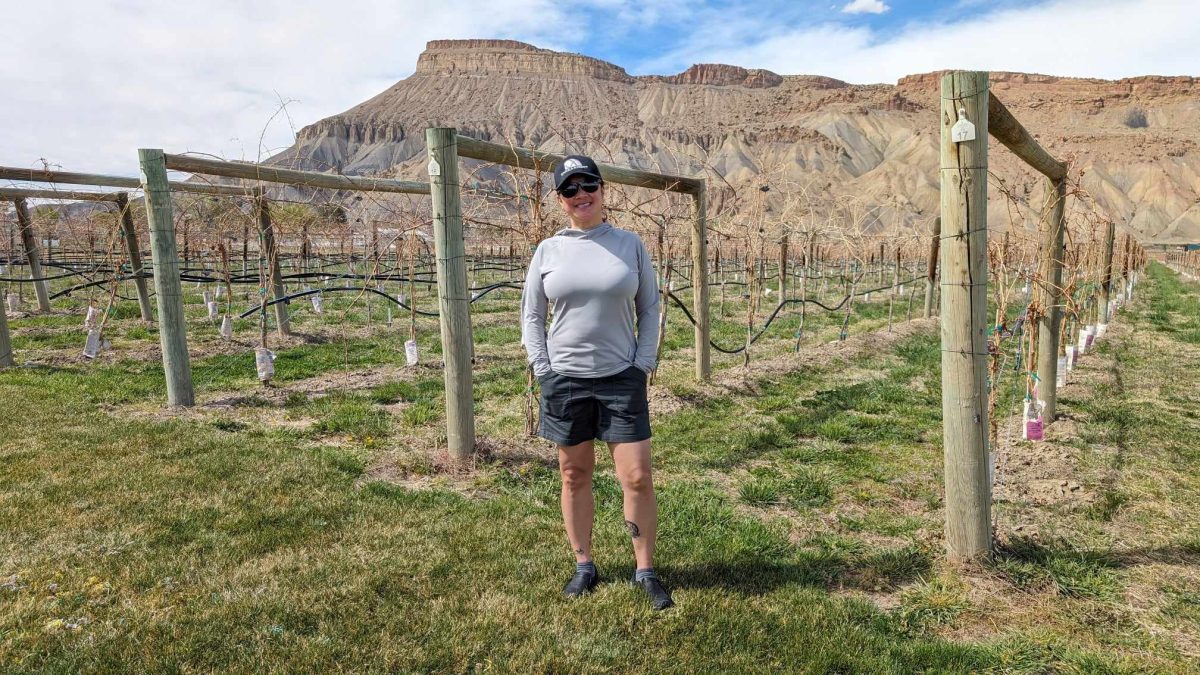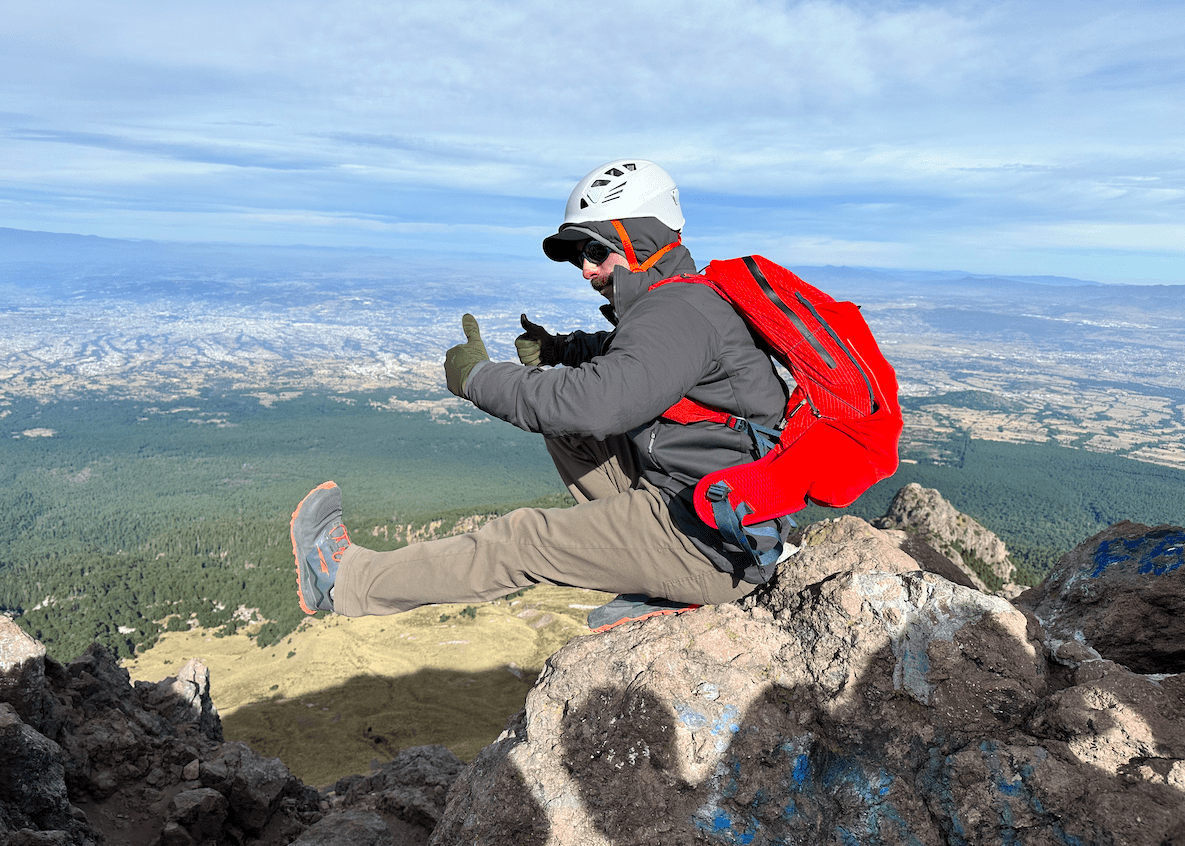M-Equipment Meidjo 3 Ski Binding
Austen Beason
Rumors of a new Meidjo telemark binding have been spreading since last winter, building the anticipation and stoke for any improvements to the already successful Meidjo 2.1. Needless to say, I was thrilled to check out the 3.0s and dig into the new features myself. So far, I’ve spent a month testing out the Meidjo 3.0 in the Colorado backcountry, with a few days of lift access time as well, and have been very impressed with them. Here’s my experience, opinions, and walkthrough of the new M-Equipment Meidjo 3.0 telemark binding.

M-Equipment Meidjo 3 Ski Binding Review
-A little about myself…
Before I get too into the details, keep in mind that even though this is a review of the Meidjo 3.0s, my experience with these bindings is a cumulative assessment of the whole setup and my style, so… here are my personal specs and ski setup for some point of reference. I am 6’3” and 180 lbs., which means I have some decent height and weight to leverage a tele binding. I have been telemark skiing for about 8 years now, and ski patrolling for the past 5 winters.
Having had the privilege to test out the Meidjo 2.1s, I knew those bindings excelled at uphill access and so assumed the Meidjo 3.0s would fit that assumption just as well. To that end, I have mounted them on G3 Findr 94s, 182 length, which I chose for longer missions and more ski-mountaineering terrain. The Findrs are definitely in the lightweight touring ski category, though I will say they seem to have a bit more backbone than most skis of similar weight class I’ve tried. Still, I’m not quite railing out big turns and hitting drops on the G3 Findrs like I would with my typical resort skis. As for the boot, I have been using the Crispi World Cups, size 28s, which are currently the stiffest ntn boot compatible with the Meidjo’s tech insert requirement.
Disclaimer, I do not personally have a background in alpine gear, let alone alpine tech bindings, other than anecdotal experience from other people, so bear with me if some of my thoughts and epiphanies are common knowledge in the alpine skiing world. Alright, on to the goods.

-Mounting
A quick note on mounting the Meidjo 3.0s. They use the same 13 mount pattern as the 2.1s, which means it’s important to give some thought about what skis and where on the ski you want them mounted, i.e. it’s going to be hard to redo the mount later. Talk with your ski tech, put some thought into the position (center, back, etc.), and perhaps think about driving a little further to find a shop with a jig if your nearest shop does not have one.
-Touring
Just as most backcountry days start at the bottom of the mountain, it seems fitting to begin with the uphill-ability of the Meidjo 3.0. Afterall, the pin-tech – touring capacity of the Meidjo line is what truly sets them apart in the telemark world. At first glance, the 3.0 looks and feels a lot like its predecessor, and for the most part you’d be right. You still have the unbeatable range of motion and near frictionless efficiency that pin-tech toe pieces afford. The 3.0s are as light as ever, weighing in at 440 grams per binding (that’s 15.5 oz for us Americans) which happens to be just a little lighter even than the 2.1s (450 g/binding). The plastic was switched up to a recyclable Pebax which happened to be lighter, more flexible, and performs better in really cold temperatures. The big news for the Meidjo 3.0s, however, is the redesigned low-tech toe piece.

While I never personally had any issues with pre-release skiing the 2.1s, I had heard some concerns with the strength/hold of the tech-toe, and will admit they could be a bit finicky at times to step into/line the pins up. Well, it would seem all of those concerns have been well addressed with the new low-tech toe. Pierre Mouyade, the M in M-Equipment, redesigned the toe box with 2 springs instead of 4, increased their diameter for greater strength, and I believe tweaked the geometry (widened the gap between the arms). What this equates to is a clip in strength 40% stronger than the 2.1s. Clipping in now to the Meidjo 3.0s has a much more solid feeling and confidence inspiring “click” than previous versions.
Furthermore, I felt that clip in process smoother easier to line up than with the 2.1s. This is extra interesting to me as Pierre did away with the bumper bars on the 2.1s that help you line the pins up, and yet made the pins on the 3.0 easier to line up sans guide. It’s still not uncommon for me to miss a time or two clipping in on my 2.1s and that just doesn’t really happen anymore with my 3.0s. Whether you’re going up or down hill, this new design provides a wonderful confidence boost and less worry.
Of course, this is still the uphill portion of the review and inevitably the hill will get a little steeper before you’re done. The heel risers on the Meidjo 3.0 are the same as the 2.1s, and in my opinion, one part of the binding that could use some modest improvement. The heel plate doubles as the risers, with the red plate flipping up for the first riser setting, and a nested wire bail that can flip up for even steeper terrain. The red plate works great, and honestly covers most steep terrain for my preference, however I find the wire bail lacking. Every time I flip up the wire it falls/rotates backwards and out of use within a few steps, no matter how much attention I pay it or how delicately I engage it. Ultimately it hasn’t really affected my experience with the binding/s (I had the same issue with my 2.1s), but it is frustrating to have a feature that isn’t usable.
 The M Equipment Meidjo 3 Telemark Binding
The M Equipment Meidjo 3 Telemark Binding
Icing hasn’t been much of an issue in my testing, though I should say I have been testing in the dry climate of Colorado. Still, snow build up in the low-tech has been a non-issue with the anti-ice plate underneath, and the springs seem to clear themselves in use. Included with the binding is an anti-ice sheet that adheres to the ski underneath the flex plate and heel clip and has so far done its job well. The one spot I do notice some snow build-up is on the heel clip itself while in tour mode but has yielded fine to a quick clean with the tip of my pole. I’d like to take these out in some wetter snow and see if snow/ice builds up any differently.
Speaking of ice, the Meidjo 3.0 does have a ski crampon interface that attaches via two screw holes mid-flex plate. The M-Equipment does not make the crampons themselves but says their interface is compatible with Dynafit ski crampons. I have not had the chance to test this function out yet.
Entering tour mode on the 3.0s is identical to the 2.1s, where you’ll need to pull the flex plate up to engage the red lever underneath the plate, press the plate back down to the ski, and flip the small wire bail up to lock the flex plate in place. The small wire bail is located between the springs towards the back of the binding. It seems flimsy but is fairly well protected and in all my days out between the 2.1s and now the 3.0s I have had no concern with this part.

-Skiing
Now that we’ve finished the uphill, let’s get into what we all came here for, the Meidjo 3.0s and that wonderful turn… If you’ve been telemarking awhile you should already know this, but for those that do not, each skier has a telemark turn and style, a preference that is unique to them. Understanding this, it seems that the Meidjos, 3.0s included, have been designed with this idea in mind – versatility to meet each skier’s style. That being said, I think there are still some more fixed qualities to how the Meidjo 3.0 skis.
Flex:
The versatility, or rather the adjustability of the Meidjo 3.0 is important to address before moving forward. The Meidjos uses two spring cables in each binding which can be fitted with numerous spring combinations. At the base level, the 3.0s come with their standard large diameter black springs. For added stiffness, there are smaller diameter silver springs that nest inside that standard black springs. If you want stiffer, you can swap the standard black springs for the Redline springs. You could ski just the Redlines, or combine them with those smaller inner springs. I suppose you could even use only the smaller inner springs by themselves if you really wanted a soft flex.

Building off of the multiple spring combinations is the ability to adjust the preload on each spring cable. Each spring cable has a Red Knob that can be dialed tighter/looser to the preferred pre-load within the Meidjos pre-set range of 1-5, 5 being the stiffest. The M-Equipment recommends you stay between the 1-5 markings, just FYI. Are you beginning to see the possibilities for different spring flex strengths and patterns, the versatility of the Meidjos? Not to mention the boot flex combinations…
After spending a few laps at the ski area fiddling with the spring tension I think I’ve found the spring combination and pre-load that I like. I have the standard black springs with the smaller, inner silver springs, and the pre-load set to 3-4, and once again I’m using Crispi World Cups. That’s my preference, but I would suggest that most people should plan on taking a few trial runs with the Meidjos and dial in the settings to their style.
If you haven’t guessed, the Meidjo 3.0s have a huge flex range. You can get soft, knee-to-ski style flex (well almost knee to ski), or really ratchet them down and have some serious power/stiffness. However, despite the huge variability there are some common sensations I found with the Meidjo 3.0 playing around with different stiffnesses. To start, the flex progression is not quite linear but rather seems to start off softer, with a much more powerful finish. Put another way, I think the Meidjo 3.0 has a slightly more ON/OFF flex progression to it, compared to say the 22 Designs Outlaw (my usual resort binding). To this end, I’ve found the Meidjos reward staying low between turns more than other bindings I use, especially in variable conditions. On the other hand, I think the softer initial flex progression allows for faster lead transitions while staying low.
There is one major spring-flex issue I would like to see some improvement on. I’ve noticed that if I dial up the pre-load, in the 4-5 range, the spring seems to bottom out earlier in the turn and force using a higher skiing stance. When the pre-load is set low, regardless of which spring or combination of springs I’m using, I can still get really low and/or into my preferred turn. So, if you like a stiff spring, but also getting into a deep turn, the best solution I’ve found is to use the redlines and innersprings with a modest preload. Otherwise, if you intend to use a high pre-load you’ll probably have to get used to a higher stance. To be clear, I don’t think this is a problem unique to only the Meidjos, but it does seem a bit more pronounced than other ntn bindings I’ve used recently.
Edging:
While perhaps somewhat related to the flex, I have noticed while skiing hardpack-firm conditions that the Meidjos seem to make me more aware of and sensitive to my edges, and similarly able to be more precise on my edging in ways that I haven’t quite felt in my other set-ups. It’s still a working theory (at least for me), but it seems that the wider connection of boot to binding via the pins provides more leverage, and thus more sensitive edge control/movement. This certainly could be a function of the ski-binding combo, but I don’t notice my edging quite the same on other bindings/skis like I do on this setup. If anyone has some insight on this or just thinks I’m wrong, I’d love to hear it.
Similarly, as the Meidjos are rigid laterally, there is no slop from cable sway. If you’re new to the NTN scene, this means a more efficient transfer of power from boot to ski edge, whether making tele turns, or dare I say it making alpine turns. Solid parallel turning is not the reason I get Meidjos, but I sure is nice to have as a backup when the legs are fried, or the snow conditions take a turn for the worse. Either way, I feel like powerful edging is one of the Meidjo’s fortes.

Other Features:
One of the big new changes coming with the Meidjo 3.0 is the new, true step-in function. To click into ski mode in past versions, the binding required lifting up the heel plate and engaging the red lever which propped the heel piece up from the ski. Now, you can simply snap into the toe piece and then step down onto the heel plate without any fiddling. This is certainly more useful for the resort days, but it’s still a worthy innovation and solidly puts the Meidjo 3.0 in the true step in the category.
Returning to the 3.0 is the adjustable release-ability. The release function is a spring integrated laterally into the ntn heel clip with side wings that operate not too different than the toe piece on the typical alpine binding. While not DIN certified, the spring can be dialed in to match one of four settings that roughly correlate to DIN spring-release ratings, from as low as ~3 on up to ~12 on the DIN scale. What really sets this feature apart in the telemark binding world, is that the release-ability is separate from the spring tension, as in you could ski with a stiff spring pre-load and still have a low release setting.
Should you need to test out the release function, the Meidjo 3.0 has a couple of retention device options. On each side of the low-tech toe are machine holes that accept ski leashes. The M-Equipment also makes brakes for the Meidjo, great for those who plan on spending more time lift-access with these bindings. I haven’t tried out the brakes but imagine they work fine.
One last unique feature-accessory to the Meidjo 3.0 is the Alpin Heel option. Again, I haven’t had the chance to test this piece out myself, but it sounds like a really cool and versatile addition to an already capable binding. The M-equipment’s Alpin Heel piece mounts separate from the main binding, just behind the standard heel piece/riser, and would allow for the option to lock the heel via pins, in addition to tele-mode. At the moment, this makes the Meidjo The Universal binding with the ability to switch between ski styles. The main caveat here is that it requires using a Crispi NTN boot as they are currently the only tele boot manufacturer that includes toe and heel tech inserts.
-Durability
I have only had the Meidjo 3.0s for about a month now, so most of my sense of their durability is anecdotal from my experience with the 2.1s. So far, the only signs of wear on the binding are some minor scratching of the toe piece/pin arms and small indents into the plastic of the low-tech lever from my ski pole tips. No function has changed or been impaired. This pretty much mirrors the wear on my 2.1s, which I’ve had for a year now with many days on them, and they are still working great. It has not become an issue yet, but the one piece I am watching more is the spring housing in my 2.1s as I’m starting to get some clicking while turning, which I think is due to rubbing between the springs and the spring box/housing.
One cool, new accessory this year from the M-Equipment is their Low-Tech Protection. The Low-Tech Protection is a simple piece of plastic with drilled holes like tech inserts that can be clipped into your Meidjo’s low-tech toe piece to protect them from impacts and damage while in storage, travel, etc. Even better, they can be used with any pin tech binding out there, alpine or otherwise. It’s a pretty simple idea that could end up saving you a lot of repair headaches and money.

-Summary
The M-Equipment has been at the forefront of the tele-tech movement since the Meidjos first release in 2015 and has raised the bar again with the Meidjo 3.0s. With a redesigned low-tech toe, new recyclable Pebax plastic, and true step in function, the Meidjo 3.0s are the lightest, strongest, and most versatile versions yet. Though touted as a touring binding, both diehard backcountry skiers and lift access chargers alike can find something to love about the Meidjos. Grab a pair and see where they take you.






Leave a Reply